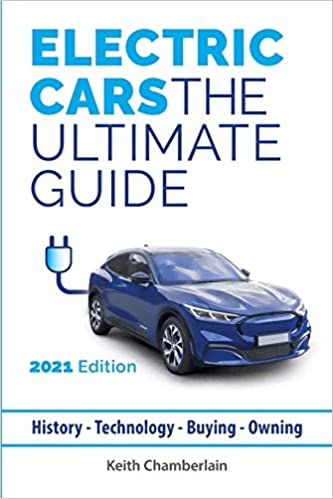Download this PDF book: Fluent Python: Clear, Concise, and Effective Programming 2nd Edition by Luciano Ramalho
Don't waste time bending Python to fit patterns you've learned in other languages. Python's simplicity lets you become productive quickly, but often this means you aren't using everything the language has to offer. With the updated edition of this hands-on guide, you'll learn how to write effective, modern Python 3 code by leveraging its best ideas.
Discover and apply idiomatic Python 3 features beyond your past experience. Author Luciano Ramalho guides you through Python's core language features and libraries and teaches you how to make your code shorter, faster, and more readable.
Complete with major updates throughout, this new edition features five parts that work as five short books within the book:
Data structures: Sequences, dicts, sets, Unicode, and data classes
Functions as objects: First-class functions, related design patterns, and type hints in function declarations
Object-oriented idioms: Composition, inheritance, mixins, interfaces, operator overloading, protocols, and more static types
Control flow: Context managers, generators, coroutines, async/await, and thread/process pools
Metaprogramming: Properties, attribute descriptors, class decorators, and new class metaprogramming hooks that replace or simplify metaclasses
From the Preface
“Python is an easy to learn, powerful programming language.” Those are the first words of the official Python 3.10 tutorial. That is true, but there is a catch: because the language is easy to learn and put to use, many practicing Python programmers leverage only a fraction of its powerful features.
An experienced programmer may start writing useful Python code in a matter of hours. As the first productive hours become weeks and months, a lot of developers go on writing Python code with a very strong accent carried from languages learned before.
Even if Python is your first language, often in academia and in introductory books it is presented while carefully avoiding language-specific features.
As a teacher introducing Python to programmers experienced in other languages, I see another problem that this book tries to address: we only miss stuff we know about. Coming from another language, anyone may guess that Python supports regular expressions, and look that up in the docs.
But if you’ve never seen tuple unpacking or descriptors before, you will probably not search for them, and you may end up not using those features just because they are specific to Python.
This book is not an A-to-Z exhaustive reference of Python. Its emphasis is on the language features that are either unique to Python or not found in many other popular languages. This is also mostly a book about the core language and some of its libraries.
I will rarely talk about packages that are not in the standard library, even though the Python package index now lists more than 60,000 libraries, and many of them are incredibly useful.
Who This Book Is For
This book was written for practicing Python programmers who want to become proficient in Python 3. I tested the examples in Python 3.10—most of them also in Python 3.9 and 3.8. When an example requires Python 3.10, it should be clearly marked.
If you are not sure whether you know enough Python to follow along, review the topics of the official Python tutorial. Topics covered in the tutorial will not be explained here, except for some features that are new.
Who This Book Is Not For
If you are just learning Python, this book is going to be hard to follow. Not only that, if you read it too early in your Python journey, it may give you the impression that every Python script should leverage special methods and metaprogramming tricks. Premature abstraction is as bad as premature optimization.
Table of Contents:
Part I. Data Structures
1. The Python Data Model
2. An Array of Sequences
3. Dictionaries and Sets
4. Unicode Text Versus Bytes
5. Data Class Builders
6. Object References, Mutability, and Recycling
Part II. Functions as Objects
7. Functions as First-Class Objects
8. Type Hints in Functions
9. Decorators and Closures
10. Design Patterns with First-Class Functions
Part III. Classes and Protocols
11. A Pythonic Object
12. Special Methods for Sequences
13. Interfaces, Protocols, and ABCs
14. Inheritance: For Better or for Worse
15. More About Type Hints
16. Operator Overloading
Part IV. Control Flow
17. Iterators, Generators, and Classic Coroutines
18. with, match, and else Blocks
19. Concurrency Models in Python
20. Concurrent Executors
21. Asynchronous Programming
Part V. Metaprogramming
22. Dynamic Attributes and Properties
23. Attribute Descriptors
24. Class Metaprogramming
About the Author
Luciano Ramalho is a Principal Consultant at ThoughtWorks and a fellow of the Python Software Foundation. He's been using Python professionally since 1998, deploying it in some of the largest Internet properties based in Brazil, as well as financial and government institutions.
Ramalho has presented Python talks and tutorials in six countries, including events like PyCon US, OSCON, Python Brasil, PyBay, and PyCaribbean. He is co-owner of Python.pro.br, a training company.
About the book:
Publisher : O'Reilly Media; 2nd edition (May 10, 2022)
Language : English
Pages : 1012
File : PDF, 10MB
Free Download the Book: Fluent Python: Clear, Concise, and Effective Programming 2nd Edition by Luciano Ramalho
PS: Share the link with your friends
If the Download link is not working, kindly drop a comment below, so we'll update the download link for you.
Happy downloading!







